
Asado, soccer, tango, mate, Malbec, dulce de leche, choripán, the Obelisco. We are all that, but we are much more than that.
The coffee shop round the corner, a non-negotiable: time to be shared with friends, Sundays spent with the family, the avenue that never sleeps, the rock nights. Endless Pampean plains, gauchos, festivals in villages, folklore.
The Patagonia, remote and mysterious, and the North, sunny and colorful. The forest, the desert, the highest peak in the Americas and the End of the World; different personality and character traits have settled in these landscapes and climates. Warm, fun, outgoing, friendly, passionate. These are some of the words used to describe the way we are.
We are all that, but we are much more than that.
It is part of our essence to be a country with open doors that hosted thousands of immigrants who chose to settle down at the South end of the South Hemisphere. And that also gives a warm welcome to world travelers and tourists.
Welcome to Argentina
-
05 Nov 23
Partner News
An Alternative Wine Route: Wineries and other Destinations in Northern ArgentinaTerroirs, varietals and sensory experiences that test your taste buds: in Argentina, wine is ...Read moreAn Alternative Wine Route: Wineries and other Destinations in Northern Argentina - News & announcementsTerroirs, varietals and sensory experiences that test your taste buds: in Argentina, wine is always the star of meetings, barbecues, and gatherings with friends and family. And, while Mendoza represents 70% of the local production and is internationally renowned for its Malbec and spectacular proposals, the northern region also offers other interesting places to discover on the national wine route. The colourful mountains, the reddish earth and the altitude as a condition make the perfect combination to enjoy a memorable circuit through seven provinces. Food and wine pairing always play a leading role, as well as walks along vineyard trails and excursions to immerse yourself in the northern landscapes.1) Salta This is one of the most sought-after locations in the region, as along 530 kilometres through the Calchaquí Valleys, one of the best versions of Salta wine can be found. Here, a peculiar harvesting altitude, ranging from 1750 metres above sea level to 2700 and 3015 in localities such as Molinos and Payogasta, provide an optimal growth of the grapes, with excellent soil and climate. But this phenomenon began much earlier: the Jesuits started the plantations in the 18th century and, since then, they have been improving and expanding the number of wineries available for consumption. Cafayate, a small town located in the south of the province, stands out as a top destination for wine enthusiasts. This charming town boasts over 2720 hectares of vineyards, representing 75% of the total number of vineyards in the entire province, as well as the largest number of wineries in the region of the valleys. It also hosts the largest winery in Salta: El Esteco. Besides, visitors can visit other wineries such as Piatelli, one of the most modern ones, Yacochuya, El Porvenir, Vasija Secreta, Nanni, El Tránsito, Amalaya and Finca Las Nubes. The route continues beyond Cafayate through the departments of Molinos, which includes the Colomé winery, San Carlos, Angastaco, Cachi and Seclantás. Now, when it comes to grape varieties, Salta's must-try is the unique Torrontés. Argentina is the only producer of this white grape, whose scent evokes white flowers and citrus fruits, and in the mouth it is fresh and aromatic, with the right balance between acidity and sweetness. The thermal amplitude of the place makes the temperatures change abruptly from day to night, which contributes to the slow ripening of the grapes, thus preserving the aromas and the natural acidity of the variety. These characteristics of Torrontés make it a perfect match for the empanadas salteñas, a gastronomic classic in this region and all over the country. These small pieces of stuffed dough are particularly special in Salta, where they are filled with knife-cut meat, onion, chopped hard-boiled egg, green olives, cumin, and paprika.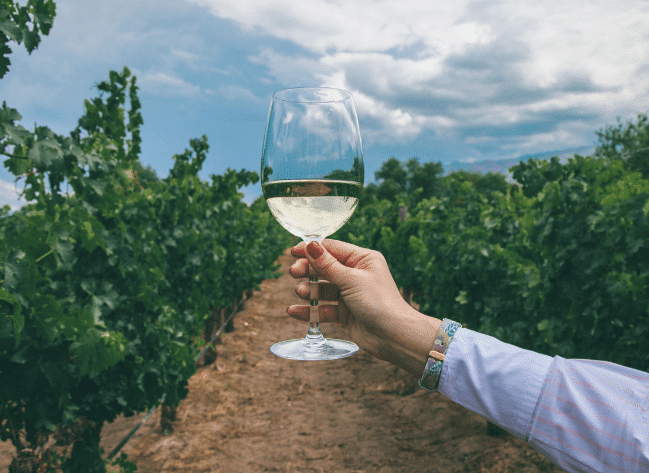 2) Jujuy Another destination noted for its high-altitude wines: ripening is optimal due to the thermal amplitude and the wind. Malbec and Cabernet Sauvignon, among others, are added to the list. The Quebrada de Humahuaca is the backdrop for this wine route. Its impressive natural beauty, cultural history and geological relevance led it to be declared a World Heritage Site by UNESCO. The reward is double: you get to know an emblematic site of the country and, in the meantime, you can taste some of the most matured wines in Argentina. Together, the local producers generate approximately 15,000 bottles a year in the region. And, while there are regions that cover more hectares, the wines produced in Jujuy continue to grow in demand, tastings, wineries, and restaurants. So, which wineries to visit? The Fernando Dupont Winery, in the locality of Maimará, is framed among the colours of the Paleta del Pintor and elaborates high altitude wines. Viñas del Perchel is located between Tilcara and Huacalera, at 2625 metres above sea level. Viñas de Uquía is a lodge that hides a small winery considered the highest in America and Europe. They produce organic wines and their star bottle, Uraqui Minero Corte A 2016, won plaudits from Tim Atkins, the prestigious Master of Wine, in his 2018 report. In addition, the Yacoraite Vineyards feature some of the most sophisticated architecture in the area, set in a rustic natural landscape at very high altitude.
2) Jujuy Another destination noted for its high-altitude wines: ripening is optimal due to the thermal amplitude and the wind. Malbec and Cabernet Sauvignon, among others, are added to the list. The Quebrada de Humahuaca is the backdrop for this wine route. Its impressive natural beauty, cultural history and geological relevance led it to be declared a World Heritage Site by UNESCO. The reward is double: you get to know an emblematic site of the country and, in the meantime, you can taste some of the most matured wines in Argentina. Together, the local producers generate approximately 15,000 bottles a year in the region. And, while there are regions that cover more hectares, the wines produced in Jujuy continue to grow in demand, tastings, wineries, and restaurants. So, which wineries to visit? The Fernando Dupont Winery, in the locality of Maimará, is framed among the colours of the Paleta del Pintor and elaborates high altitude wines. Viñas del Perchel is located between Tilcara and Huacalera, at 2625 metres above sea level. Viñas de Uquía is a lodge that hides a small winery considered the highest in America and Europe. They produce organic wines and their star bottle, Uraqui Minero Corte A 2016, won plaudits from Tim Atkins, the prestigious Master of Wine, in his 2018 report. In addition, the Yacoraite Vineyards feature some of the most sophisticated architecture in the area, set in a rustic natural landscape at very high altitude.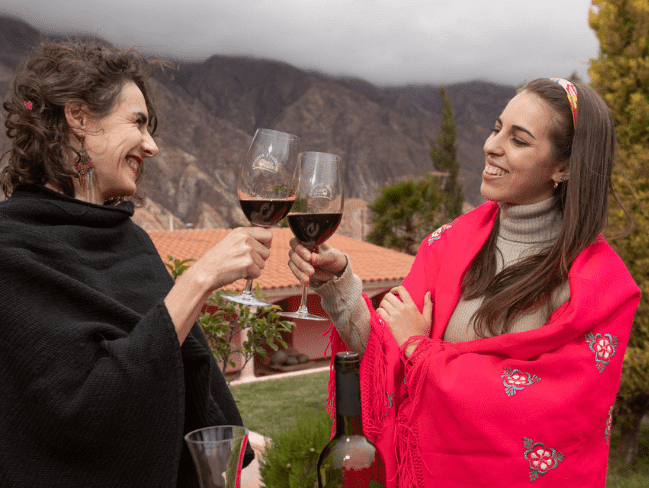 3) La RiojaThe Torrontés variant from La Rioja deserves its own chapter, as it leads the way on the map of this grape variety and on the wine route. Being part of the northwest region of Argentina, the climatic conditions are similar to the rest of the provinces and, therefore, the dry, warm weather with little rainfall is ideal for cultivation. The valleys of La Rioja will seduce anyone wishing to take a trip through its red, yellow and green lands. Apart from its greatest attraction, the Talampaya National Park, the roads of vineyards are among the podium of musts in this red earth province. There are more than twenty wineries in the region, some of which are family-run and others of an industrial nature. What they all have in common is that they seek to transmit the purest essence of La Rioja’s Torrontés and other grape varieties to those who are curious about the tasting experience. Which places should you visit for a sensorial wine experience? The Familia Sacavino Arrieta Winery is located in the town of Los Palacios and delivers a full-blooded Torrontés from La Rioja called Sumalao. Bodega Aicuña was established by local winemakers and has become an ever-growing winery. Haras San José offers tastings with local gastronomy and different wines, all of them oriented to make the most of the experience. Valle de la Puerta Winery, in the Famatina Valley, stands out for their elaboration of red wines such as Malbec and Bonarda.
3) La RiojaThe Torrontés variant from La Rioja deserves its own chapter, as it leads the way on the map of this grape variety and on the wine route. Being part of the northwest region of Argentina, the climatic conditions are similar to the rest of the provinces and, therefore, the dry, warm weather with little rainfall is ideal for cultivation. The valleys of La Rioja will seduce anyone wishing to take a trip through its red, yellow and green lands. Apart from its greatest attraction, the Talampaya National Park, the roads of vineyards are among the podium of musts in this red earth province. There are more than twenty wineries in the region, some of which are family-run and others of an industrial nature. What they all have in common is that they seek to transmit the purest essence of La Rioja’s Torrontés and other grape varieties to those who are curious about the tasting experience. Which places should you visit for a sensorial wine experience? The Familia Sacavino Arrieta Winery is located in the town of Los Palacios and delivers a full-blooded Torrontés from La Rioja called Sumalao. Bodega Aicuña was established by local winemakers and has become an ever-growing winery. Haras San José offers tastings with local gastronomy and different wines, all of them oriented to make the most of the experience. Valle de la Puerta Winery, in the Famatina Valley, stands out for their elaboration of red wines such as Malbec and Bonarda.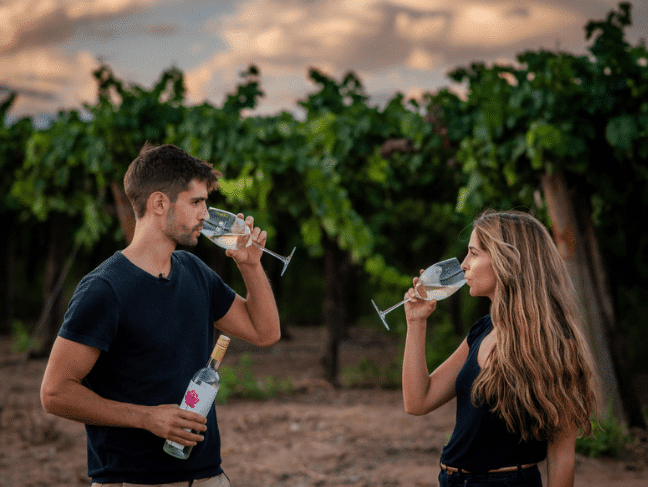 4) Santiago del Estero
Santiago del Estero is also a favoured destination for Argentina's iconic grape. In the town of Beltrán (Robles), the province unveils a little-known side that deserves a prominent role as an experience. When the sun goes down and the sky becomes a canvas of stars and darkness, a new adventure begins. This includes tasting local wines, guided meditation sessions, the opportunity to explore local recipes that will challenge the palate, and the chance to contemplate the starry sky with the help of binoculars and telescopes. Finca María Pilar is the first winery in Santiago certified by the National Institute of Viticulture and offers a walk through the vineyards, a criollo lunch including wine tasting, tastings of goat cheese and other local products.
4) Santiago del Estero
Santiago del Estero is also a favoured destination for Argentina's iconic grape. In the town of Beltrán (Robles), the province unveils a little-known side that deserves a prominent role as an experience. When the sun goes down and the sky becomes a canvas of stars and darkness, a new adventure begins. This includes tasting local wines, guided meditation sessions, the opportunity to explore local recipes that will challenge the palate, and the chance to contemplate the starry sky with the help of binoculars and telescopes. Finca María Pilar is the first winery in Santiago certified by the National Institute of Viticulture and offers a walk through the vineyards, a criollo lunch including wine tasting, tastings of goat cheese and other local products.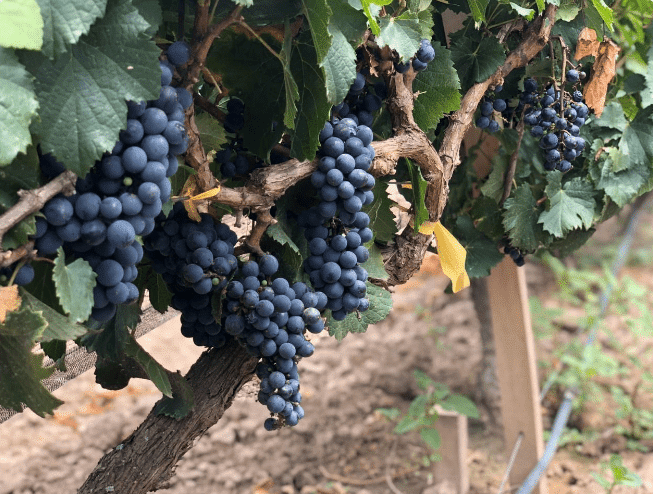 5) Catamarca
A place with the Andes Mountains to the west and plenty of sierras, archaeological sites, adobe roads and high dunes. A place where nature grows without too much effort and there are activities in every single corner. One of Catamarca's attractions is undoubtedly its own wine itinerary. On the border with Tucumán, the town of Santa María (within the Calchaquí Valley) is one of the most suitable for the production of high altitude wines such as Barbera, Malbec, Bonarda, Syrah and Tannat. The iconic Ruta 40 joins with Ruta 60 to connect other impressive valleys: Tinogasta and Fiambalá. The sandy soils and mild inland weather favour the elaboration of high quality premium wines. The Hualfín winery, at 1568 metres above sea level, is equipped with state-of-the-art technology and impressive machinery, which allows for the production of numerous kilos of Malbec and Torrontés grapes. West of Catamarca lies Tinogasta, a town sheltered by the majestic and beautiful Seismiles, the highest mountain range in Argentina, whose peaks surpass 6000 metres above sea level. In this area you will find Bodega Veralma, another opportunity to discover high altitude wines. In the Pomán Valley, in the locality of Siján, lies El Manchao, an imposing hill whose highest peak rises to 4561 metres above sea level. More than a century ago, an agricultural tradition began at its base, and has endured through the generations and continues to advance today: the Michango winery. They produce wines with complex colour and aroma, as well as a structure that is a unique and unmistakable reflection of their terroir.
5) Catamarca
A place with the Andes Mountains to the west and plenty of sierras, archaeological sites, adobe roads and high dunes. A place where nature grows without too much effort and there are activities in every single corner. One of Catamarca's attractions is undoubtedly its own wine itinerary. On the border with Tucumán, the town of Santa María (within the Calchaquí Valley) is one of the most suitable for the production of high altitude wines such as Barbera, Malbec, Bonarda, Syrah and Tannat. The iconic Ruta 40 joins with Ruta 60 to connect other impressive valleys: Tinogasta and Fiambalá. The sandy soils and mild inland weather favour the elaboration of high quality premium wines. The Hualfín winery, at 1568 metres above sea level, is equipped with state-of-the-art technology and impressive machinery, which allows for the production of numerous kilos of Malbec and Torrontés grapes. West of Catamarca lies Tinogasta, a town sheltered by the majestic and beautiful Seismiles, the highest mountain range in Argentina, whose peaks surpass 6000 metres above sea level. In this area you will find Bodega Veralma, another opportunity to discover high altitude wines. In the Pomán Valley, in the locality of Siján, lies El Manchao, an imposing hill whose highest peak rises to 4561 metres above sea level. More than a century ago, an agricultural tradition began at its base, and has endured through the generations and continues to advance today: the Michango winery. They produce wines with complex colour and aroma, as well as a structure that is a unique and unmistakable reflection of their terroir.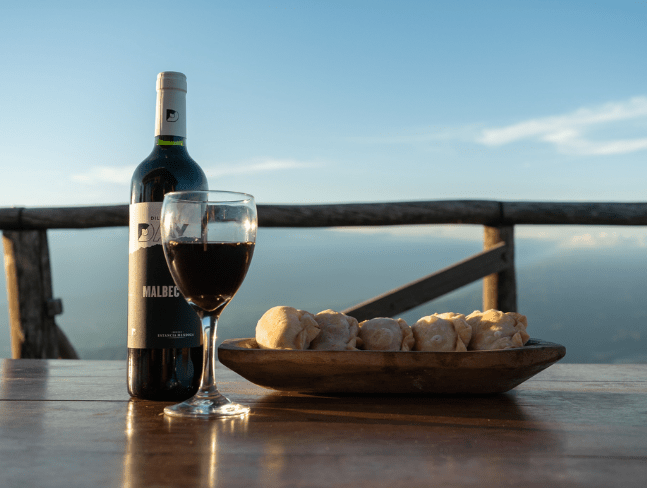 6) San Juan
The second most active province in the country's wine industry, a significant achievement for a place where wine plays such a prominent role. Around 16% of its vast territory, characterised by picturesque valleys and mountains, is dedicated to the production of this treasured elixir. While Syrah is the leading variety locally, Torrontés undoubtedly takes the lead when it comes to white wines. Here, arid soil and constant sunshine give rise to fertile vineyards that are home to both traditional and modern boutique wineries. The latter, equipped with state-of-the-art technology, venture into new techniques in the wine industry, resulting in award-winning wine varieties both nationally and internationally. The wine route in this region covers five valleys: Calingasta, Pedernal, Tulum, Ullum-Zonda and Fértil. Several wineries open their doors to the public, creating a unique wine tourism experience in the country. In Tulum, you will find Viñas de Segisa, Marale Wines, Las Marianas, Callia, El Milagro and Bodega Argus. The Ullum-Zonda area offers Apotema or Finca Sierras Azules, two excellent representatives of the province. The Pedernal Valley, in turn, is located between 1100 and 1500 metres above sea level, 150 kilometres north of the city of Mendoza and almost 100 kilometres south of San Juan, the capital of the province. Here you can find wineries such as Pyros Wines of Salentein, Guarida del Malbec and Graffigna Yanzon. Lastly, Calingasta features the Andes Mountains and foothills on the other side, along Route 40 where you can visit wineries such as Entre Tapias, Bodega del Carmen, Los Dragones, 35.Cinco or Alta Bonanza de los Andes7) TucumánThis is a must when visiting the northwest of Argentina. The charm of local grapes is experienced in several provinces, including Tucumán, which is no slouch in this respect. Malbec and Torrontés stand out on a route that covers approximately 100 kilometres in the heart of the Calchaquí Valleys, where vineyards range in altitude from 1750 to 3000 metres above sea level. Along the way, the iconic Route 40 meets Route 307, creating a landscape of vineyards and wineries. Both local and large-scale producers are devoted to growing one of the country's most prized fruits. This results in a tasting experience that combines perfectly with the rich regional food. Tucumán is also home to the only winery in Argentina (and third in the world) managed and run by an indigenous community: Bodega Los Amaichas. This community belongs to the Gran Nación Diaguita (Great Diaguita Nation) and has a political system headed by a Cacique (Chief), a Council of Elders and an Assembly. Creating the winery was a wonderful way to become part of society. Around 60 families work together to produce truly exceptional wines in harmony with Mother Earth. The region's gem is Sumak Kawsay, which in Quechua means 'the good life'.
6) San Juan
The second most active province in the country's wine industry, a significant achievement for a place where wine plays such a prominent role. Around 16% of its vast territory, characterised by picturesque valleys and mountains, is dedicated to the production of this treasured elixir. While Syrah is the leading variety locally, Torrontés undoubtedly takes the lead when it comes to white wines. Here, arid soil and constant sunshine give rise to fertile vineyards that are home to both traditional and modern boutique wineries. The latter, equipped with state-of-the-art technology, venture into new techniques in the wine industry, resulting in award-winning wine varieties both nationally and internationally. The wine route in this region covers five valleys: Calingasta, Pedernal, Tulum, Ullum-Zonda and Fértil. Several wineries open their doors to the public, creating a unique wine tourism experience in the country. In Tulum, you will find Viñas de Segisa, Marale Wines, Las Marianas, Callia, El Milagro and Bodega Argus. The Ullum-Zonda area offers Apotema or Finca Sierras Azules, two excellent representatives of the province. The Pedernal Valley, in turn, is located between 1100 and 1500 metres above sea level, 150 kilometres north of the city of Mendoza and almost 100 kilometres south of San Juan, the capital of the province. Here you can find wineries such as Pyros Wines of Salentein, Guarida del Malbec and Graffigna Yanzon. Lastly, Calingasta features the Andes Mountains and foothills on the other side, along Route 40 where you can visit wineries such as Entre Tapias, Bodega del Carmen, Los Dragones, 35.Cinco or Alta Bonanza de los Andes7) TucumánThis is a must when visiting the northwest of Argentina. The charm of local grapes is experienced in several provinces, including Tucumán, which is no slouch in this respect. Malbec and Torrontés stand out on a route that covers approximately 100 kilometres in the heart of the Calchaquí Valleys, where vineyards range in altitude from 1750 to 3000 metres above sea level. Along the way, the iconic Route 40 meets Route 307, creating a landscape of vineyards and wineries. Both local and large-scale producers are devoted to growing one of the country's most prized fruits. This results in a tasting experience that combines perfectly with the rich regional food. Tucumán is also home to the only winery in Argentina (and third in the world) managed and run by an indigenous community: Bodega Los Amaichas. This community belongs to the Gran Nación Diaguita (Great Diaguita Nation) and has a political system headed by a Cacique (Chief), a Council of Elders and an Assembly. Creating the winery was a wonderful way to become part of society. Around 60 families work together to produce truly exceptional wines in harmony with Mother Earth. The region's gem is Sumak Kawsay, which in Quechua means 'the good life'.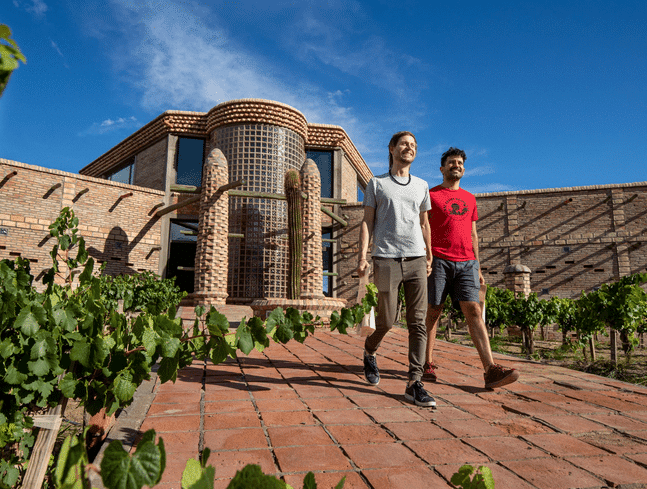
-
05 Nov 23
Partner News
Eight New Experiences to Enjoy in Argentina for the First TimeIs there anything nicer than being able to experience new things? Well, doing something ...Read moreEight New Experiences to Enjoy in Argentina for the First Time - News & announcementsIs there anything nicer than being able to experience new things? Well, doing something for the first time makes you feel like an innocent child, constantly surprised and not knowing what comes next. The right blend between expectation and reality, a reality that is so often surpassed. Being in Argentina is just that, connecting once and a thousand times with moments that exceed all expectations. Eyes wide open and emotions running high.
Now, when was the last time you did something for the first time? If the answer is not clear, the solution is to travel to the Country at the End of the World. The rest is up to us. Just one piece of advice: be prepared, because they say that reality surpasses fiction and so does Argentina.
1) Feeling and Dancing Tango
Sensuality at its best. Some say that it's a common mistake to think too much when dancing the tango. And that's true, because this dance is pure feeling. Homero Cerecedo Exelente, a famous Mexican poet, once said that there is more truth in tango than in history books. And it’s true: you don't dance tango, you don't see it, you don't sing it: you just feel it.
Where can you enjoy this heartfelt dance? San Telmo is its birthplace and the cobbled streets are the main stage. The tango rhythm you can feel in the air and the Plaza Dorrego, the second-oldest square in the city, is key for tango couples. Plaza Dorrego is also home to a large fair that on Sundays runs from Humberto Primo and Defensa streets to Parque Lezama and part of Pasaje Giuffra. Obviously, if you want to practice some dancing moves, you should visit a milonga (a venue where tango is danced).
2) Giving a Round of Applause to the Asador during an Authentic asado
Whether you have to celebrate, or wait for a big match, or any Sunday lunchtime: a nice asado is a must among the people of the Country at the End of the World, and the meeting place is always around the grill. Isn't a first time with this delicacy what anyone needs on Argentine soil? The answer is yes.
The asado includes various cuts of meat; vegetables such as potatoes, red pepper with egg, onion, sweet potato and more; provoleta, a melted and seasoned provolone cheese; and offal, among them the choripán, synonymous with happiness and, according to the British magazine The Taste Atlas, one of the five best sandwiches on the world. And you may be wondering what to drink with it. It could be wine, birra (that's how locals call beer) or Fernet (a typical drink of Italian origin that in Argentina is mixed with Coca-Cola).
But why the applause for the asador? Grilling is quite a ritual for Argentinian people. It's not just skill, it's practice. Whoever takes the lead as cook will be honoured by his diners with a heartfelt and grateful applause.
3) Tasting Malbec
If you were to do so in Mendoza, the national wine capital and the largest producer of this elixir in the country, it would be an unforgettable first time. Especially when contemplating the marvellous postcards of the Andes Mountains. Nothing happens at random here, because if we are talking about Argentina, we are talking about the world's leading country in Malbec production and owner of some of the most important wineries on the world scene. In fact, Zuccardi Valle de Uco has been ranked the best winery in the world for the last three years according to The World's Best Vineyard ranking.
We were saying, then: you are in Mendoza, you pour a glass, you smile, and you appreciate the colour of the grapes. To reach perfection, you pair it with good company and excellent food. What do we mean? Asado and its previous tapas (better known as picada), pasta and strong cheeses such as blue cheese or Roquefort. And to top it all off, chocolate, of course.
.jpg)
4) Chatting with Friends while Drinking Mate
Messi, tango, asado, dulce de leche, Diego Armando Maradona and mate. There are some distinctive emblems associated with Argentina as soon as they are heard. After all, how do you recognise an Argentinian abroad? By their mate under their arm, of course. And even more so if you add friends to the equation.
But what is it? Mate is an infusion made from yerba mate that is popularly drunk with water at 80 degrees and with no sweeteners. Of course, tradition is the rule, but there are those who prefer to boil the water or add sugar. It is said that there is no accounting for taste, and mate proves it every day. And what’s the magic behind this green drink? Well, it’s the pleasure of meeting. If we philosophise a bit, mate is much more than just a regular drink. It’s a companion. In the morning, in the afternoon, a few hours before dinner and even in the middle of the night to boost a long night of study. It’s never a bad time to try it because it will never matter what time the clock shows.
If mate is enough of a companion, why do we still encourage you to have it with friends? Because that's where its true charm lies. Drinking mate together means combining a historical tradition with a great moment of friendship. Because just as tango has its rhythm, so does mate, and its passing from hand to hand is almost like taking the mic to speak.
 5) Experiencing a Superclásico
5) Experiencing a SuperclásicoSpain has Real Madrid-Atletico; Brazil, Flamengo-Fluminense, and England, Liverpool-Man United. Well, Argentina has the Superclásico.
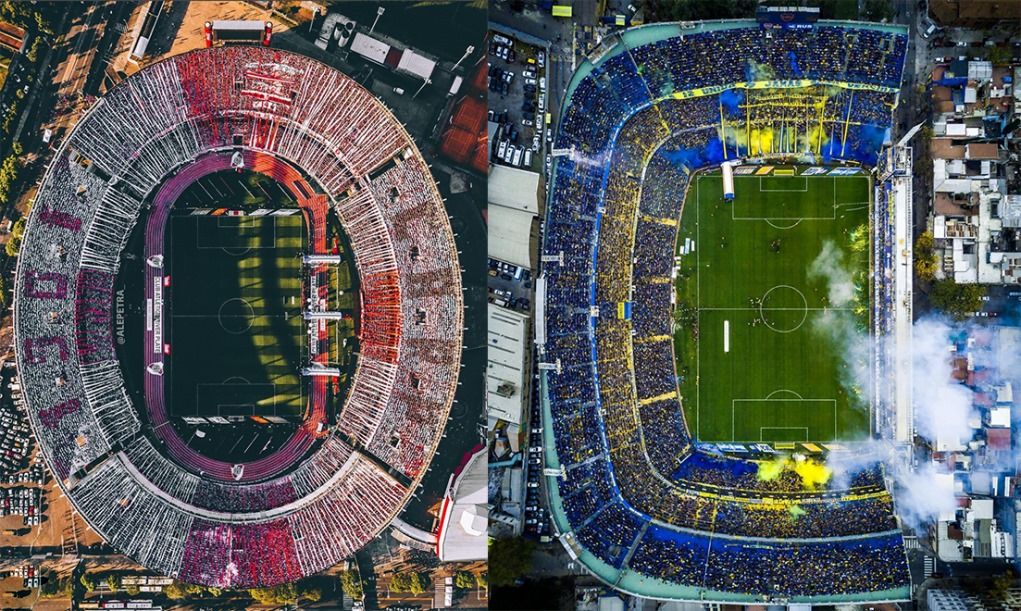
What about it? Nothing less than the historic rivalry of Argentinian football. A duel where the entire country is totally absorbed in the ball for 90 minutes. Few things unleash passion like a goal scored in a Boca-River match. According to The Observer, it is one of the 50 sporting spectacles you have to see before you die. It was also listed as one of the most exciting sporting experiences in the world. Are you ready to find out for yourself?

6) Getting on Board of the Third-Highest Train in the World
For 50 years, the Tren de las Nubes (Train to the Clouds) has been giving postcards and unique moments to the lucky ones who decide to take a trip through northern Argentina. Its name is a hint of the experience and—of course—it is a must on any itinerary through the province of Salta. It covers 216 kilometres through tunnels, viaducts, bridges, and hills. It is located at 4220 metres above sea level. Yes, those with vertigo should think twice before boarding. Among the most iconic images is the La Polvorilla Viaduct, a supreme work of engineering that weighs 1,600 tonnes, is 224 metres long and crosses Route 40, one of the most iconic road stretches in the country. There is no need to go on giving reasons, this first time will stick in your mind-

7) Witnessing the Grandeur of a Southern Right Whale
Patagonia knows a great deal about sea life and has a little treasure in Puerto Madryn. We are talking about Península Valdés, declared a UNESCO World Heritage Site in 1999. It makes sense, as it is one of the most extraordinary coastal features in the world. And it is clear that not only humans are aware of its wonder, because from August to April all kinds of marine creatures choose to visit it: sea lions, dolphins, whales and orcas, among others. Just one piece of advice: patience. Whale spotting requires time, but nothing better than enjoying the process.
Now, which is the favourite character here? The southern right whale, of course, which attracts visitors from all over the world. This makes sense, because its water dance is a spectacle that is worth the many miles you travel and is not often seen. And if there's one place to enjoy this experience, it's no better than Península Valdés, which hosts the largest breeding population of this endangered species during August and September.
-
04 Nov 23
Partner News
Six ways to discover Argentina’s thriving gastronomy scene in 2024With the MICHELIN Guide set to launch in Argentina later this year, starting in ...Read moreSix ways to discover Argentina’s thriving gastronomy scene in 2024 - News & announcementsWith the MICHELIN Guide set to launch in Argentina later this year, starting in the City of Buenos Aires and Mendoza, there has never been a better time to sample Argentina’s world-class food, wine, beer and traditional delights. From the bounty of Mendoza’s renowned vineyards to the family-style Bodegóns located across Argentina’s vibrant capital, there are plenty of ways for travellers to immerse themselves in the local culture and experience the unique tastes and flavours of this South American country in 2024. 1. Try MICHELIN dining in the City of Buenos Aires and Mendoza The MICHELIN Guide is set to make its debut in Argentina this year, with the first selection of restaurants in the two participating cities - the City of Buenos Aires and Mendoza - to be presented on 24th November. In 2024, visitors can experience the rich food and cultures of these two dynamic cities and be one of the first to sample cuisine from the newly awarded restaurants. Buenos Aires has long been known as a world-class destination for international and local foodies, home to exquisite fine dining restaurants and casual bistros, whilst the incredible wine culture of Mendoza has shaped the hospitality industry to offer exceptional restaurants and unmissable wineries. 2. Experience asado - the Argentinian barbeque Asado is essential to the national identities of Argentinians. The simple definition refers to meat cuts (especially beef) laid on a parrilla or grill served with tomato and lettuce salad. But in Argentina, asado is much more than just a meal. It also refers to the gathering of people and the social event associated with eating it. The meal includes various cuts of meat; vegetables such as potatoes, red pepper with egg, onion and sweet potato; provoleta, a melted and seasoned provolone cheese; and offal, among them the choripán, synonymous with happiness. This iconic experience is often enjoyed at home, but also in many restaurants across the country. 3. Explore the breathtaking vineyards of Mendoza on the ‘wine route’ Home to more than 800 of Mendoza’s 1,200+ wineries, the ‘wine route’ covers the three main regions of Maipú, Luján de Cuyo and the Uco Valley. Wine enthusiasts are encouraged to take at least four or five days to explore this route, allowing stops at some of the destination’s most iconic wineries all framed by the spectacular Andes Mountains and lush green vineyards. Visit between January and March for Fiesta de la Vendimia, Mendoza’s National Grape Harvest Festival, which is the ultimate celebration for wine enthusiasts. Travellers can experience dancing, singing, parades and floats hosted in celebration of the harvest and its people, taking place in various parts of the province and culminating at the Frank Romero Day Greek Theater. 4. Dine at a Bodegón in the vibrant capital One of the most popular ways of trying traditional Argentine food is in one of the thousands of bodegónes - otherwise known as canteens - located in the many neighbourhoods of Buenos Aires. The heart of a true bodegón is the traditional dishes in their simplest form without garnishes: the menu includes plentiful homemade classic dishes at affordable prices. Visitors can enjoy family-style dining accompanied by local music and a lively atmosphere. 5. Sample mate: a tradition that is part of Argentina’s national identity A trip to Argentina is not complete without trying the traditional beverage, mate, typically consumed with water at 80 degrees and without sweeteners. Originating from the guarani people who recognised the yerba mate tree as a gift from the gods, mate has become an integral part of Argentinian life, symbolising friendship and sharing. Travellers can tour the Yerba Mate trail in the provinces of Corrientes and Misiones to learn about the production of mate and visit the historical establishments. In the city of Buenos Aires, the José Hernández Popular Art Museum [Museo de Arte Popular José Hernández] hosts one of the most important mate and criollo silver utensils in the country, and to sample the drink, visit one of Buenos Aires’ “mate bars” found all around the city. 6. Visit Ushuaia, Argentina’s southernmost city, for the freshest King Crab At the southernmost tip of Argentina, the cold deep sea water of Ushuaia makes it the ideal spot for the King Crab to thrive. A trip to Ushuaia usually involves sailing down the Beagle Channel, the most popular area for fishing this particular crustacean - one that has become the most typical and unmissable food for visitors to the area. The best time to sample the freshest King Crab is from November to January, as fishing is prohibited in the area from 1st March to 30th June in order to avoid overfishing. Many restaurants in the area display the King Crab in fishbowls so visitors can select the one they would like to try. Top tip: choose the most active crab, as this will be the freshest.
 United Kingdom
United Kingdom United States
United States Asia Pacific
Asia Pacific
 #scaloneta #selección #argentina #fútbol #messi ##scaloni #selecciónargentina
#scaloneta #selección #argentina #fútbol #messi ##scaloni #selecciónargentina 










